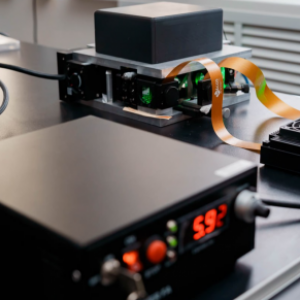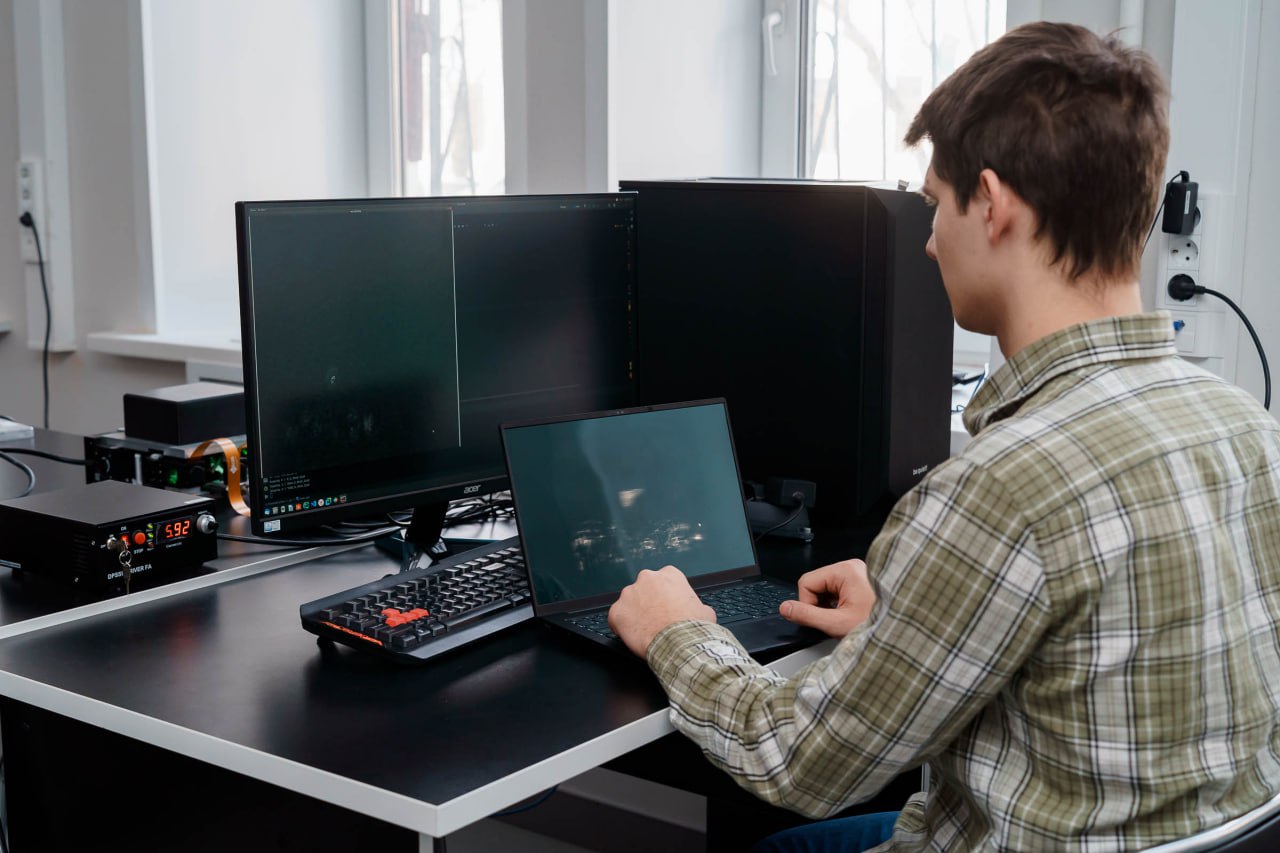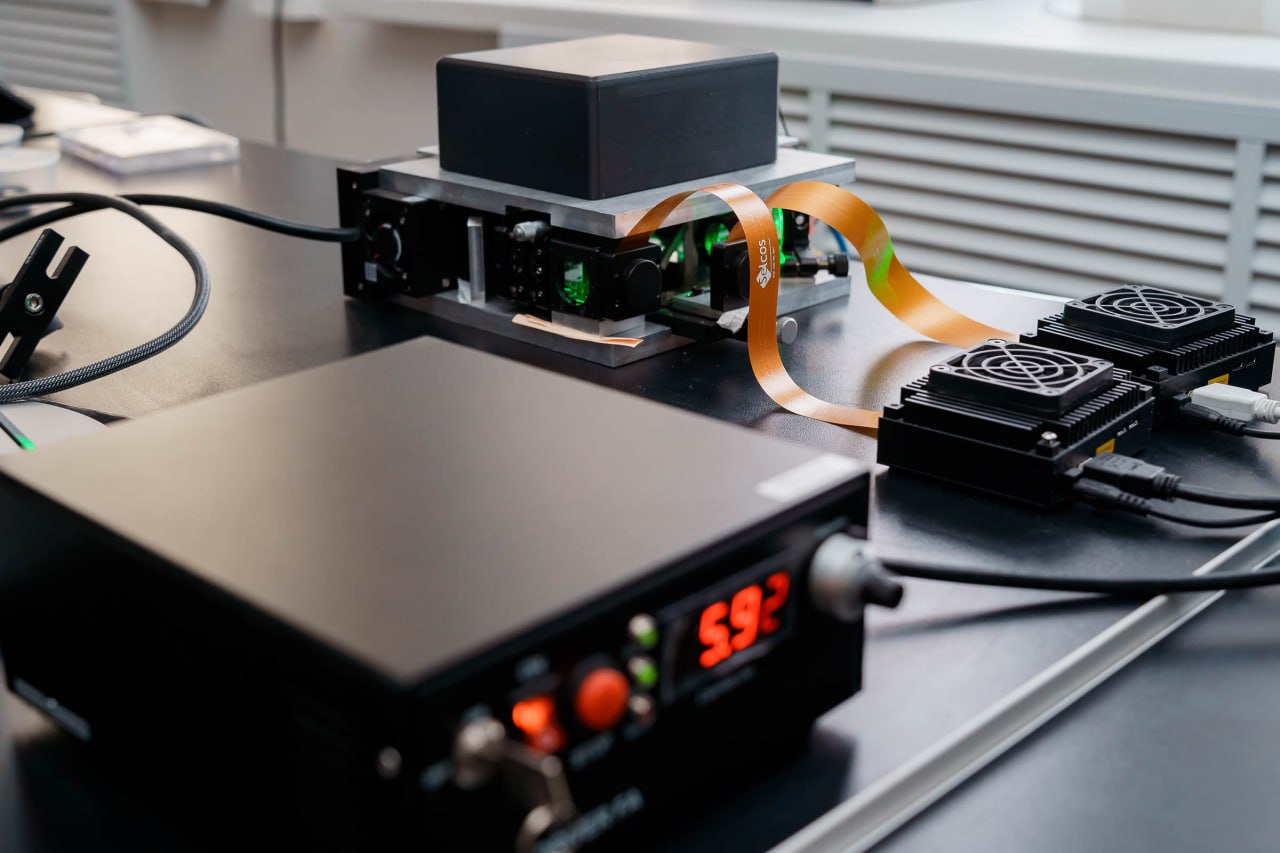Scientists from Samara University created and tested an updated version of the experimental sample of the analog photonic computing system capable of processing video data hundreds of times faster than modern digital neural networks based on traditional semiconductor computers. The updated version has increased the energy efficiency of computing and the recognition accuracy, while the design of the device has been slightly simplified.
“We have made a number of changes to the design of the previously created experimental computer sample, resulting in the updated version with improved specifications. In this version, we applied the phase input of the optical signal: it turned out that it is no worse than the traditional amplitude input, and even much better for a number of tasks. Due to the changes, it was possible to significantly increase the overall energy efficiency of the device by about 50%, that is, by one and a half times. The point here, of course, is not about saving electricity, but about computing efficiency, which is one of key parameters for computing devices. Besides, the number of errors decreased, and the recognition accuracy increased by about 1%. By applying phase input, we have removed some design elements related to processing the intensity of the optical signal. The design has become simpler, hence there are fewer possible sources of errors during calculations. Considering that we are already very close to 100%, each new step to increase the accuracy is a very difficult task, at this level an increase of 1% is a very significant indicator”, said Roman Skidanov, Professor at Samara University’s Department of Engineering Cybernetics, Doctor of Physics and Mathematics.
Phase input is associated with one of the main parameters of an optical signal, among which there are amplitude (intensity), phase, and polarization. During phase input, the front of the electromagnetic wave carrying the image of the analyzed object is phase-modulated in the computer. That is, the data on this image can be said to be encoded not by the intensity of the light, but by the phase of the wave. This is something like different types of modulation in radio broadcasting: amplitude modulation is used on medium and long waves, and frequency modulation is used in the FM range, and the difference in modulation methods greatly affects the sound quality of radio stations.
The updated version of the computer was presented on the venue of the Technopark “Sarov” during the visit of Mikhail Mishustin, Chairman of the Government of the Russian Federation. The event was attended by Gennady Krasnikov, President of the Russian Academy of Sciences, Aleksey Likhachev, CEO of the State Atomic Energy Corporation “Rosatom”, and Aleksander Sergeev, Scientific Director of the NCPhM.
The development was presented by a young development team from Samara University, including postgraduate student Yury Khanenko, fourth-year students Aleksey Pronin, Aleksander Morozov and Daniil Sorokin.
“Our development aroused wide interest and was highly appreciated by many participants in the meeting”, said Roman Skidanov.
Currently, the University is also assembling a prototype photonic computer, it is being created based on the scheme of the experimental sample and, according to the developers, will be almost a pre-production sample.
The project on creating the analogue photonic computing system is being implemented as part of the scientific program of the National Centre for Physics and Mathematics (NCPhM). Researching in framework of this project is funded by the Ministry of Science and Higher Education of the Russian Federation and the “Rosatom” State Corporation.
The optical neural network based on the photonic computing system will be able to analyze the video stream entering the system in real time and almost instantly, at the speed of the input/output devices, recognize and find objects and images specified in this video stream. Along with analyzing the “picture” from a conventional video camera, the development also makes it possible to quickly process data obtained by hyperspectrometers – devices that watch the reality via multichannel spectral imaging, and allow detecting objects invisible to conventional means of observation.
The ability to analyze hyperspectral data is a key feature of the Samara photonic computing device. Hyperspectral data initially represent very large arrays of information, the analysis of which takes, as a rule, considerable time.
Besides high performance and wide spectral range, analogue optical computing systems also have advantages, such as complete protection from electromagnetic disturbances, low energy consumption and the option of parallel data processing. The system scheme that allows for fully optical processing of incoming data, was first proposed in 1958. This area actively developed in the 1980s of the last century, but then using the devices almost ceased, because of both their bulkiness and development of digital technology. In recent years, in various countries of the world, this field of applied research has become increasingly relevant, due to new materials and compact special-structure optics to be designed.
For reference
In hyperspectral imaging or hyperspectral Earth remote sensing conducted from a UAV or a space satellite, each pixel of the resulting image is represented as a full or continuous spectrum, which allows identifying spectral properties of the desired objects, as well as detecting objects invisible when other means of observation applied, during processing the data obtained.
For example, hyperspectrometers can efficiently detect greenhouse gases by recording methane and CO2 emissions, as well as conduct geological exploration of hard-to-reach areas, identifying from space spectral signatures of various minerals, including those that indicate possible location of oil and natural gas deposits. Hyperspectrometers can monitor more efficiently and accurately occurrence of forest fires and the condition of forests and agricultural crops, help calculate vegetation indices and even detect from outer space stress in plants.
 RU
RU  EN
EN  CN
CN  ES
ES 

